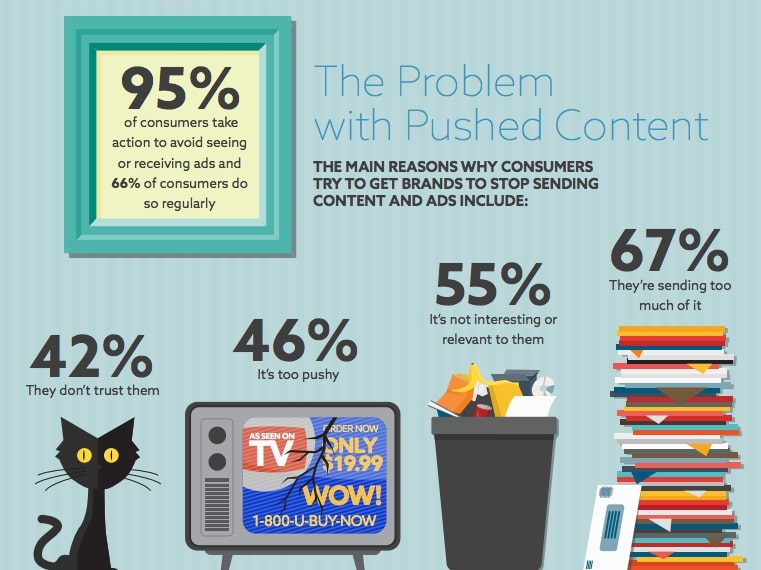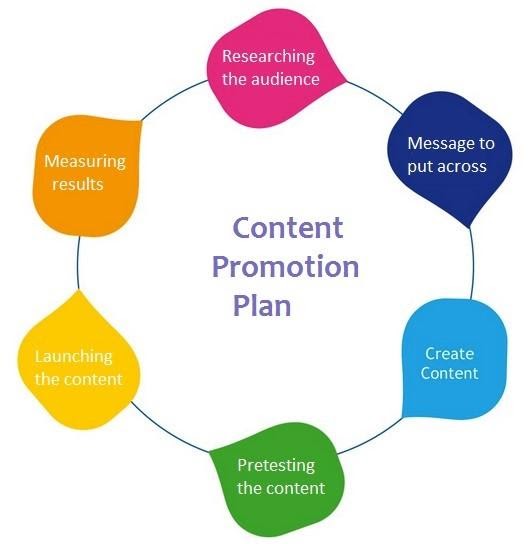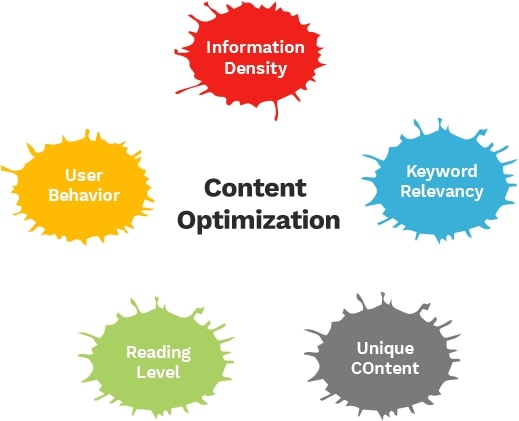6 Content Marketing Mistakes to Destroy E-Commerce Sales
Content marketing is a perfect tool to drive sales. When employed correctly, content can engage prospects and lead them to convert into paying customers. However, when done wrong, it can divert the audience’s attention away from your brand. When it comes to content marketing, there are so many mistakes you can encounter. By learning about the most common content marketing blunders, you can avoid slipping up into making the same mistakes. To help you get started, we have gathered the most common content marketing mistakes that can destroy your e-Commerce sales. So, make sure to tune in, and let’s get started!
Plagiarising
It is not unusual for writers to lift a quote from someone else’s research paper, blog post, or book. There is nothing wrong with quoting or citing other authors when writers are unable to get a comment or information on their own. Yet, when texts are overdone or sources are not cited, it means that a writer plagiarized someone else’s work.
Plagiarism is not only unethical but also illegal in many countries. It does not require much effort to copy-paste information from another brand’s blog post, email newsletter, or website. However, when exposed, plagiarism can hit your business, and especially e-Commerce sales.
Marketers often use content to build trust with their audience. Yet, when customers notice that a brand plagiarises someone else’s content, it makes them doubt the brand’s overall credibility.
After brands get caught plagiarizing, it is very hard for them to win back the audience’s trust and get them to purchase again. So, it is better to avoid plagiarism altogether in your content marketing efforts. Follow these five tips to avoid plagiarism in your copies:
- Always cite your sources when the wording, idea, or concept was not discovered by you.
- Include quotations when you insert the source’s words into your writing to denote that the words are not yours.
- Use a tool for paraphrasing in order to express the same concept without using the source’s precise language.

Often content marketers delegate blog writing to freelancers or dedicated services that handle custom essays, blog posts, and articles writing for websites. If you use this model as well, it is useful to create plagiarism guidelines and use plagiarism detectors to avoid copyright violations.
Read more:
- What is Authority Marketing?
- 11+ Best Online Advertising Channels
- 12 Amazing Native Advertising Examples
- 20 Best Marketing Books
Wrong Topics
Another way to destroy E-commerce sales is by choosing the wrong topics for your content. Oftentimes, writers read other blogs to get ideas for their content. What they fail to realize is that most of the topic ideas do not relate to their audience.
Studies show that 55% of consumers who receive content from brands say that it is not interesting if it lacks relevance. So, if you want to engage customers enough for them to make a purchase, your topic choice must be relevant.

When choosing your content topics, focus on solving customer pain points. Customers often go to the blog section in hopes of finding a solution to their problem. Therefore, the content topics should help them solve problems or, at least, address them. Keep a fine balance between posting blog posts about your e-Commerce business and blog posts that address customer pain points. This way, you can promote your business while staying relevant and interesting to your audience.
Focus on Blog Posts Only
Focusing solely on blog posts is another content marketing blunder that can hurt your e-Commerce sales. Content marketing includes so many content types, particularly visual content, that can help you attract and keep more customers. Yet, marketers’ focus on blog posts is a common mistake that instead of engaging customers can do the opposite.
Graphic content proves to be extremely effective in engaging the audience. This happens because our brains process visual information 60,000 times faster than text. This human ability to respond to and process visual data better than any other data type opens up numerous opportunities for content marketers. You can use images, infographics, videos, GIFs, and other visuals to grab the audience’s attention and get them to buy from you.

Additionally, more and more customers want to see graphic and audible content online. It allows them to multitask and get some sort of variety in their lives. If you publish text posts only, customers will easily get bored. Therefore, it is important to ensure that you have different content types, and particularly visual content, on your website, email newsletter, and social media.
Publish Button Is Not Enough
Let’s say, you have created the best content out there. You have created all kinds of engaging blog posts, visuals, infographics, and videos. Yet, no one knows about your efforts, and your numbers do not show an increase in engagement or conversions. This scenario is way too popular among content marketers.
Here is what they fail to realize - customers will not visit your site every day to see if there is something new, and other users will not know about you just because. No one will know about your awesome content if you do not find a way to promote it on social media, via email, or in other blogs.

Publishing content does not guarantee its success. To maximize your content marketing efforts, you should have a well-thought-out marketing strategy. This includes content promotion and distribution across multiple channels. Here are some tips to help you get started:
- Find niche-relevant communities and establish your brand’s credibility within.
- Use social media platforms, especially Facebook, to inform your audience about new content on the website.
- Share new articles and blog posts in your email newsletter.
- Leverage the power of paid advertising to expand your reach and promote website content.
- Use guest blogging platforms to ensure your content is delivered to the right audience.
- Follow the best search engine optimization (SEO) practices to maximize your reach.
Oversell
Being too salesy is another common mistake often made by even the most experienced content marketers. Unlike sales propaganda, content marketing’s primary purpose is to share helpful information that can assist prospective customers in solving their problems.

Did you know that on average people are exposed to 5,000 ads a day? As we live in a world of never stopping advertising, twenty-first-century customers are immune to obvious sales pitches. That is why when content marketers try to sell their products in blog posts, they are risking to lose invaluable potential customers.
The whole point of your content marketing efforts should revolve around helping your audience solve their pain points and building trust. Instead of pitching your products, research consistent and relevant topics to engage your audience and focus on what is in it for them.
No Optimization
Here is another common scenario that can ruin your e-Commerce sales. Let’s say you have succeeded to design amazing blog posts, infographics, and videos. You have a strategy in place to promote your content on social media and via email. Yet, when users get to your website, your awesome content takes forever to load. It is impossible to browse your site for more content because UX design is not user-friendly at all. Text is unreadable because of a bad font and color choice. As a result, potential customers choose to leave your website because they can’t wait for more than three seconds.
All of the listed issues happen as a result of content marketers failing to optimize their content. Slow load time, problems accessing files, poor font, and color choice can divert traffic away from your website, and as a result, kill your e-Commerce sales.

To avoid these issues altogether, it is important that you optimize your website and content regularly. Here are some optimization tips worth implementing:
- Use titles, meta descriptions, meta keywords, tags, and URLs in text.
- Optimize images, videos, and other visuals to optimize your website’s speed.
- Use dedicated plugins to improve your website’s speed and performance.
- Reuse and repurpose old copies.
Read more:
- The 5 W’s & the H in Content Marketing
- 8 Best Ecommerce Marketing Strategies
- Digital Marketing For Dummies
Conclusion
Content marketing does not have to be rocket science. Yet, many marketers face the same mistakes when trying to master content for e-Commerce. By understanding the most common content marketing mistakes, you can learn from the experiences of others and deploy a mistake-free content marketing strategy.
Before you go on to design your content marketing pieces, let’s quickly wrap up what you have learned today about the most common mistakes that can ruin your e-Commerce sales.
- Many content marketers think that plagiarizing someone else’s content is a quick and easy way to reach their goals. Yet, plagiarism is not only illegal, but can also hurt your brand’s reputation, ruin credibility, and kill e-Commerce sales.
- By choosing the wrong content topics, you are risking to lose the interest of your prospective customers.
- When creating your content strategy, it is important to focus on other content types besides blog posts. Make sure to create awesome videos, email pieces, and social media content to engage more prospective customers.
- Prospective customers will not know about your content if you fail to promote it on social media, via email, or in other blogs.
- Being too salesy is another content marketing mistake that can ruin your online sales.
- Once your content is ready and live, it requires constant optimization.
New Posts

How To Set Up Google Analytics 4 For Your BigCommerce Store






